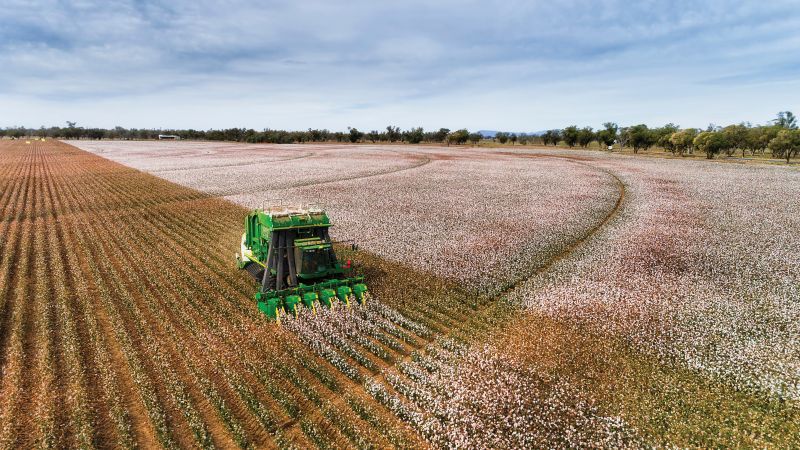Rolling With the Punches
Though they operate on separate pricing scales and largely in a separate geographic region, extra-long staple (ELS) growers in the U.S. have been fighting some of the same battles that their Upland counterparts have struggled with in recent months.
Just like in the country’s Upland industry, a recessive global economy has taken its toll on Pima demand. Prices have fallen drastically. And as more and more growers switch to alternate crops, the loss of cotton infrastructure becomes a major concern for the industry.
A decade ago California routinely harvested over a million acres of cotton a year. This season the state will harvest approximately 200,000.
Pima has absorbed a significant percentage of the acreage hit. As recently as 2007, California planted nearly 300,000 acres to Pima cotton. This year, the state planted only 120,000 Pima acres, according to USDA statistics.
A major concern for the cotton industry in California is the probability that those acres may not return.
“There’s been a lot more permanent crop acreage that has gone in over the last 5 to 8 years. Meaning some trees — particularly auburn pistachio trees, and then some more grapes ― are the kind of permanent crops that, once they go in, the grower is not going to be rotating out of them any time soon,” says Matt Laughlin, marketing manager for J.G. Boswell and Co., California’s largest producer of Pima cotton.
Though Boswell is unwilling to discuss exact figures when it comes to the company’s Pima acreage, it is safe to assume that the company has traditionally dominated Pima acreage in the state. As large and powerful as the company may appear, though, Laughlin admits that not even Boswell is immune to Pima’s problems in California.
Drying Up
“The short of it is that there has been about a three-year drought. The severity can be debated, but there’s been about three years of below normal rainfall and snowpack,” says Laughlin. “But on top of that, there’s been a reduction of some of the water that comes down from the Sacramento Delta, and there’s been some Federal rulings that have limited the amount of water that’s come down there.”
Government officials have stepped in to ration water in an effort to protect an endangered fish native to the area.
Because of the restrictions – both natural and federally mandated – on water, Boswell has had to let some of its acreage go fallow. This growing season marks the first time in years the company won’t reach the 100,000 acre mark.
Pendulum Swing
Of course, wild swings in price have driven many growers away from planting Pima this season as well. As recently as a year ago, Pima was fetching $1.40 per pound on the market. Today prices hover around the $1.05 mark.
“We found out that nothing is immune from the recession, to this extent, and the luxury segment of which Pima is a part has taken a hit,” says Laughlin.
What makes the price swings even more drastic is the success Boswell experienced with Pima in the 2007/08 season.
“We came off our largest offtake year ever last year. In 2007/08, we had more than 800,000 bales sold. It was just a great year, and then the pendulum swung completely the other way,” says Laughlin.
But there are signs that the ELS market’s three biggest consumers – China, Pakistan and India – could be leading the way out of Pima’s dark days.
A Light at the End of the Tunnel
“They’ve picked up their sales, particularly in India and Pakistan. But China has really come to the table recently, which has been very good for us. They got some more import quota, and they were able to use some of that on Pima. And now their new crop is going to be coming off. So I think that is going to help us as we get into the fall,” says Laughlin.
The numbers from Boswell certainly back up Laughlin’s sense of optimism. July was the company’s best Pima export month since May 2008 – a full 14-month period.
“These mills are running through their inventories and are getting back to more of a sense of equilibrium when it comes to supply and demand. We feel better about the future right now in the Pima markets,” Laughlin says.
Add photo:
Matt Laughlin









